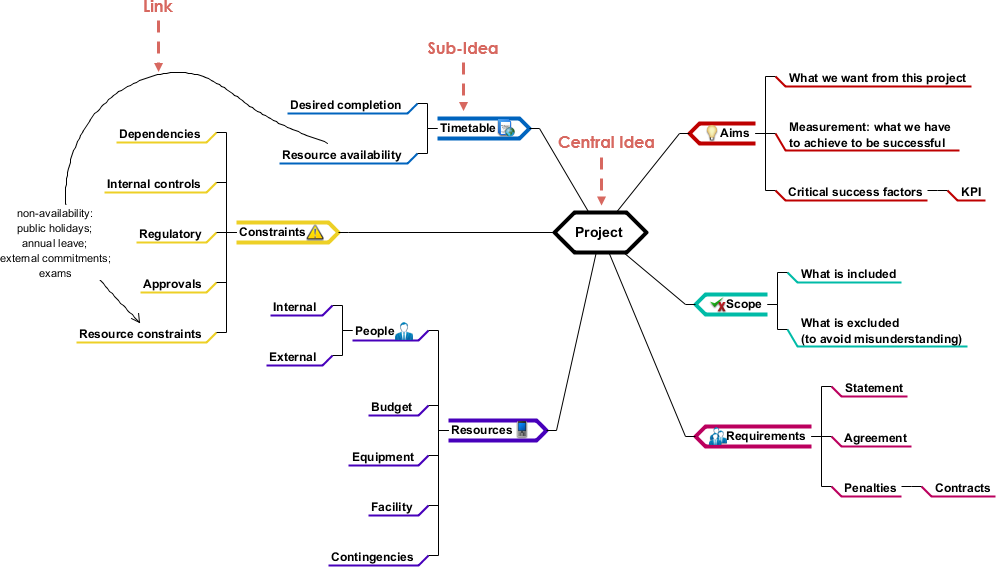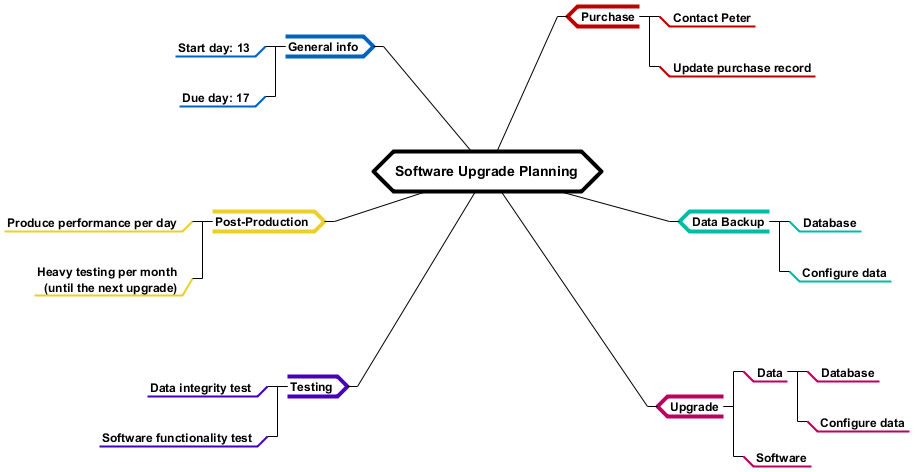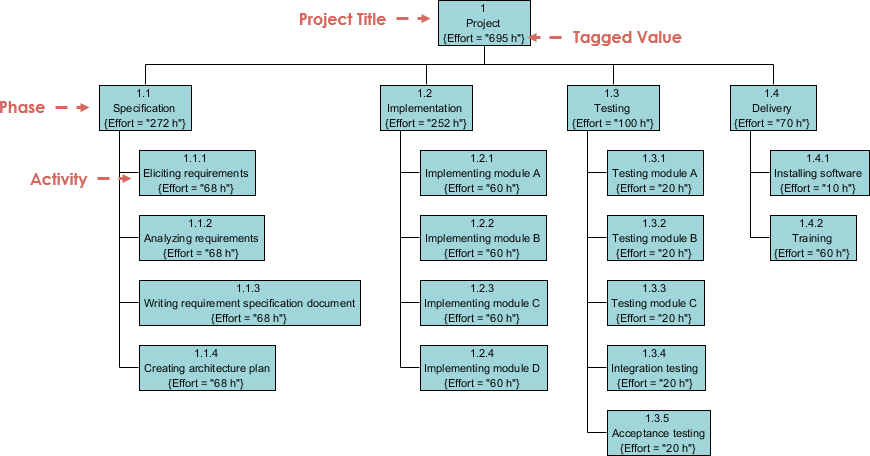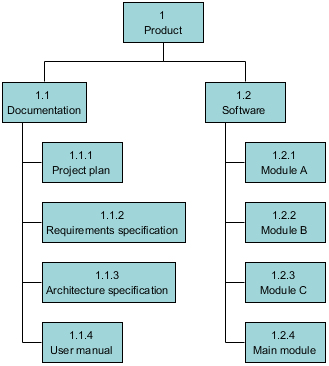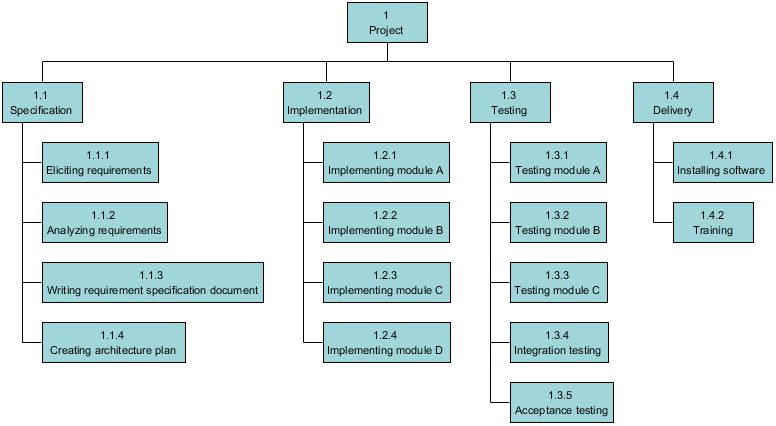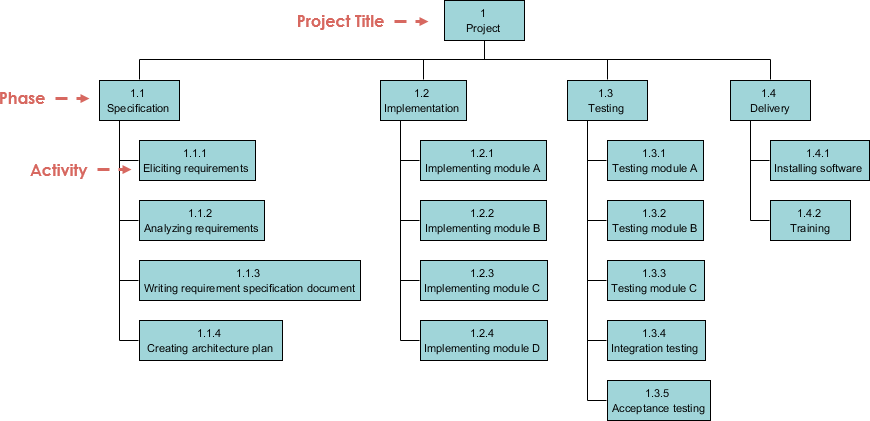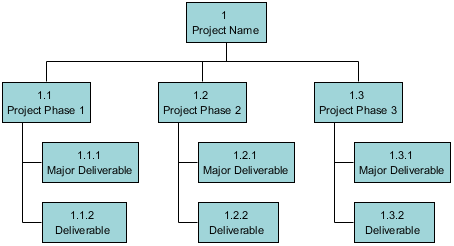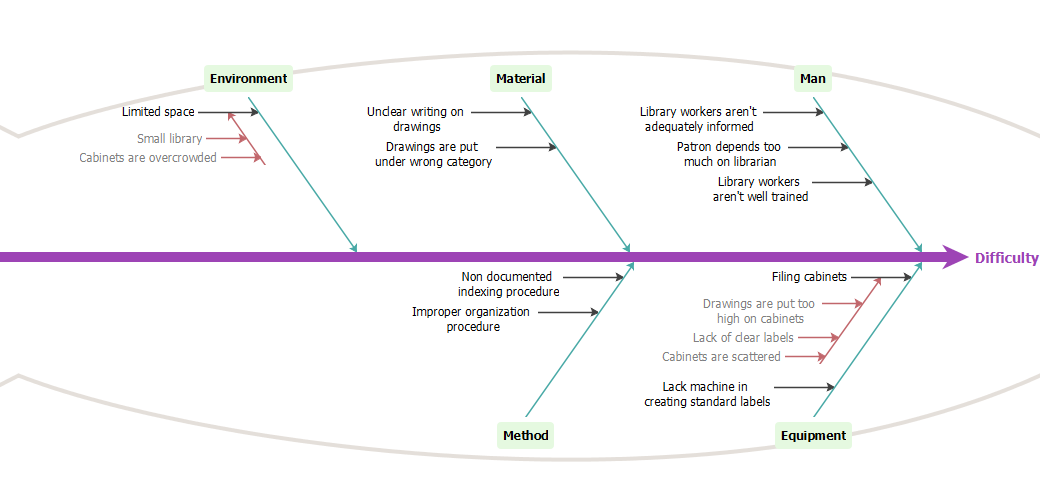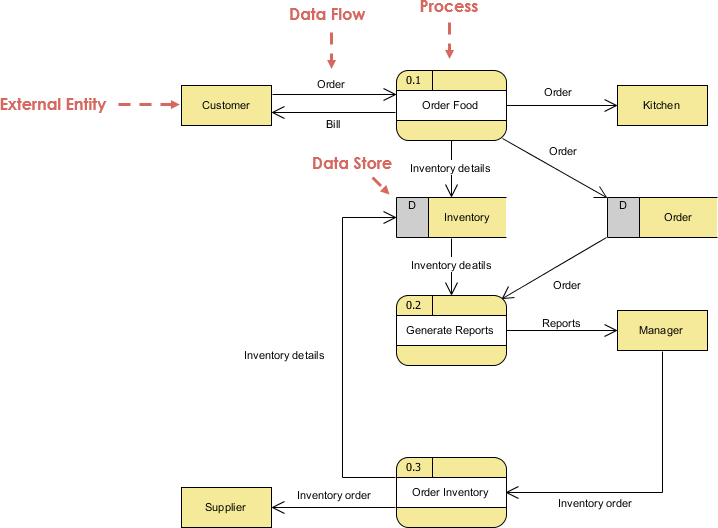
The next stage (See Previous Stage) is to create the Level 1 Data Flow Diagram. This highlights the main functions carried out by the system. As a rule, we try to describe the system using between two and seven functions - two being a simple system and seven being a complicated system. This enables us to keep the model manageable on screen or paper.
We must break up the single process into its sub-processes. The DFD example here shows the level 1 DFD, which is the decomposition (i.e. break down) of the Food Ordering System process shown in the context DFD.
Import into your Project
Open diagram in Visual Paradigm [?]Copy the URL below, paste it in the Open Project windows of Visual Paradigm and press Enter to open it |
Posted by:




